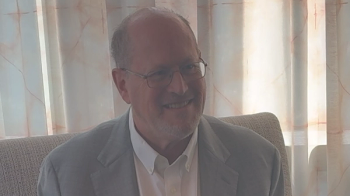
- Oncology Vol 28 No 1S
- Volume 28
- Issue 1S
(P035) Outcomes in Patients With Hypopharyngeal Cancer Treated With Intensity-Modulated Radiation Therapy
Intensity-modulated radiation therapy (IMRT) is increasingly used in the treatment of hypopharyngeal carcinoma for functional organ-sparing. We retrospectively reviewed our single-institution experience treating stage I–IVa hypopharyngeal cancer (HPC) patients with definitive IMRT +/− chemotherapy.
Mark A. Edson, MD, PhD, Vinita Takiar, MD, PhD, Beth M. Beadle, MD, PhD, Steven J. Frank, MD, PhD, Clifton D. Fuller, MD, PhD, Gary B. Gunn, MD, William H. Morrison, MD, David R. Rosenthal, MD, Adam S. Garden, MD, Jack Phan, MD; UT MD Anderson Cancer Center
Background: Intensity-modulated radiation therapy (IMRT) is increasingly used in the treatment of hypopharyngeal carcinoma for functional organ-sparing. Due to the relative rarity of this diagnosis, particularly at early stages, few reports of outcomes exist. We retrospectively reviewed our single-institution experience treating stage I–IVa hypopharyngeal cancer (HPC) patients with definitive IMRT +/− chemotherapy.
Materials and Methods: Fifty-seven patients who were treated with definitive IMRT from 2003–2013 met our inclusion criteria. The Kaplan-Meier method was used to estimate locoregional control (LRC), distant metastasis-free survival (DMFS), progression-free survival (PFS), and overall survival (OS) of this cohort of patients.
Results: Median age at treatment was 65 years. American Joint Committee on Cancer (AJCC) clinical stages were: I, 1 (T1 N0); II, 12 (10 T2 N0 and 2 T1 N1); III, 15 (6 T2 N1, 4 T3 N0, and 5 T3 N1); and IVA, 29 (5 T1 N2, 13 T2 N2, and 11 T3 N2). Patients were treated to a dose of 66–72 Gy (1.8–2.2 Gy per fraction). Forty-four patients (77%) received chemotherapy: 43 concurrent and 38 induction. The median follow-up was 28.8 months (range: 3–105 mo). The 2- and 5-year OS was 74% and 60%, respectively; LRC, DMFS, and PFS at 2 years were 77%, 88%, and 62%, respectively. There was no significant difference in OS (P = .7) or PFS (P = .4) when comparing patients by AJCC stage or nodal status. However, smaller primary tumors did trend toward improved 2-year OS (86% for T1 vs 72% for T2–T3; P = .2), which was independent of nodal status. There was a trend toward improved LRC in patients who received chemotherapy (P = .07). Three patients had postradiotherapy neck dissection for persistent nodal disease. Feeding tubes (FTs) were placed in 38 patients (67%): 9 prior to treatment (16%), 26 during treatment (46%), and 3 (5%) after treatment. Of those with FTs placed during or after treatment who became FT-independent (97%), median FT duration was 2.8 months (range: 1.2–13.9 mo). Twelve grade 3 toxicities were observed: nine dysphagia, two fatigue, and one pain. Actuarial 2-year and 5-year grade 3 toxicities were 18.4% and 23.2%, respectively.
Conclusions: These preliminary data suggest acceptable disease outcome and toxicity rates for hypopharyngeal carcinoma patients treated with definitive IMRT+/− chemotherapy. Smaller primary size and use of chemotherapy may predict for better prognosis. Further analysis of this cohort and of patients with T4 or N3 disease is ongoing to validate these findings.
Articles in this issue
Newsletter
Stay up to date on recent advances in the multidisciplinary approach to cancer.



















































































